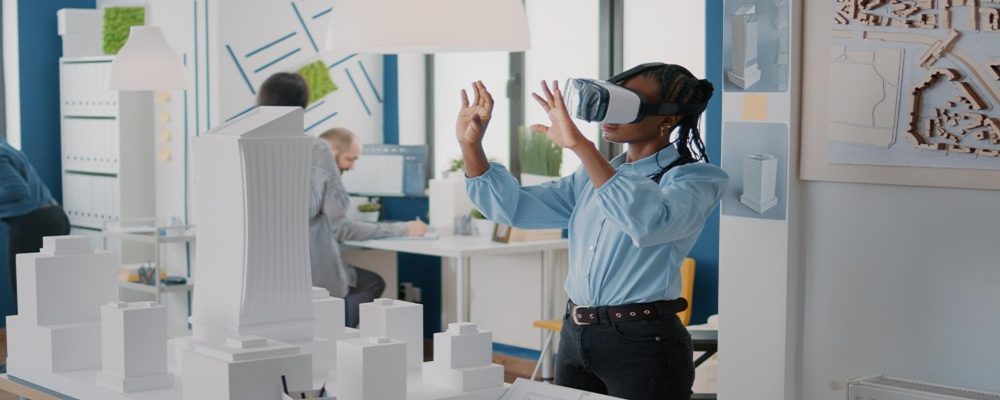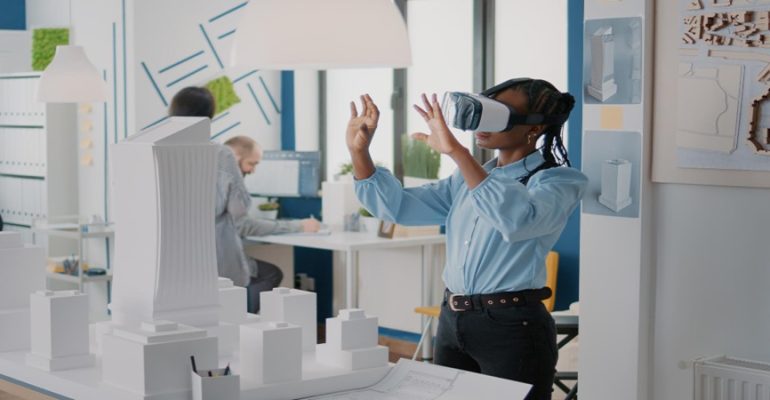
Exploring the Nexus of Metaverse Architecture

Exploring the Nexus of Metaverse Architecture
In the turbulent technological landscape, Metaverse emerges as a beacon of innovation, promising a virtual realm where our physical and digital worlds converge seamlessly. While its potential applications span various domains, one area that intrigues us is its intersection with architecture. Imagine stepping into a virtual world where buildings transcend the constraints of reality, offering immersive experiences and limitless design possibilities. In this exploration, we delve into the symbiotic relationship between Metaverse and architecture, uncovering the transformative impact they could have on each other.
Metaverse: A New Frontier in Digital Realms
At the forefront of this paradigm shift is the concept of the Metaverse, a collective virtual space comprised of interconnected, immersive digital environments. Spearheaded by visionary companies like Metaverse Solution Company in India, this burgeoning field seeks to redefine the way we interact with digital content and each other. By leveraging cutting-edge technologies such as augmented reality (AR) and virtual reality (VR), these companies are pioneering novel experiences that transcend traditional boundaries.
Augmented Reality: Creating connections between the digital and tangible domain
Augmented reality companies play a pivotal role in bridging the gap between the physical and virtual realms. By overlaying digital content in the real world, AR technology has the capacity to transform the perception of space and architecture. Imagine donning a pair of AR glasses and seeing virtual prototypes of buildings seamlessly integrated into the urban landscape. This blend of digital and physical elements opens new avenues for architectural exploration, enabling architects to visualize and refine their designs in real time.
Metaverse Architecture: Redefining Design Paradigms
Central to the convergence of the Metaverse and architecture is the concept of Metaverse architecture, where virtual environments serve as the canvas for architectural expression. Unlike traditional architectural practices constrained by physical limitations, Metaverse architecture offers boundless creative freedom. Architects can design fantastical structures that defy the laws of physics, pushing the boundaries of imagination and innovation.
One compelling use case of Metaverse architecture lies in collaborative design environments. Imagine a virtual studio where architects from around the globe gather to brainstorm ideas and co-create immersive spaces. Through real-time collaboration tools and interactive simulations, teams can iterate on designs with unprecedented speed and precision, fostering a culture of innovation and collaboration.
Now, let’s explore how architecture and AR are shaping the Metaverse landscape:
Metaverse Architecture in Urban Planning:
Metaverse solution companies in India, such as those pioneering AR technology, are increasingly collaborating with architects and urban planners to reimagine cityscapes. Through AR-enhanced visualization tools, architects can overlay proposed buildings onto existing environments, allowing stakeholders to experience and evaluate the impact of new constructions in real time. This not only streamlines the design process but also fosters community engagement and informed decision-making.
Augmented Reality in Architectural Design:
Augmented reality companies are revolutionizing the way architects conceptualize and communicate their designs. By leveraging AR applications, architects can transform 2D blueprints into immersive 3D models that clients can explore in their physical surroundings. This not only enhances comprehension but also facilitates collaborative design iterations, leading to more innovative and client-centric solutions.
Interactive Experiences in Built Environments:
One of the most exciting prospects of Metaverse architecture is the potential for creating interactive experiences within built environments. Imagine visiting a museum where exhibits come to life through AR animations, or a historical site where visitors can witness past events unfold before their eyes. By integrating AR into architectural spaces, designers can enrich the user experience and blur the boundaries between physical and virtual realms.
Virtual Real Estate and Digital Twins:
As the concept of virtual real estate gains traction in the Metaverse, architects are exploring the creation of digital twins for physical properties. These digital replicas, enriched with AR overlays, serve as immersive previews for prospective buyers or tenants, allowing them to envision customization options and assess spatial layouts remotely. This not only accelerates the sales process but also fosters a deeper connection between individuals and their future living or working spaces.
Use Cases: Bringing Metaverse Architecture to Life
Let’s delve into a few use cases that exemplify the transformative potential of Metaverse architecture:
Virtual Showrooms: Retailers can create immersive virtual showrooms where customers can explore architectural spaces and visualize products in situ. From furniture placement to interior design, these virtual environments offer a personalized shopping experience unlike any other.
Architectural Visualization: Metaverse architecture enables architects to go beyond static renderings and create dynamic, interactive visualizations of their designs. Clients can step into virtual models of proposed buildings, experiencing them from every angle and providing feedback in real time.
Virtual Events and Exhibitions: Conferences, trade shows, and exhibitions can leverage Metaverse architecture to create immersive virtual environments that transcend physical constraints. Attendees can explore virtual pavilions, interact with exhibits, and network with participants from around the world.
The Future of Architecture in the Metaverse
As we peer into the horizon of possibilities, it’s clear that the Metaverse holds immense potential to revolutionize the field of architecture. By embracing this new frontier, architects can unlock a world of creativity and innovation, transcending the constraints of reality to shape virtual landscapes that inspire and captivate.
Closing Thoughts:
The convergence of the Metaverse and architecture represents a paradigm shift in how we conceive, design, and experience the built environment. With visionary companies leading the charge, we stand at the cusp of a new era where the boundaries between the physical and virtual worlds blur, giving rise to a vibrant ecosystem of digital creativity and exploration. Let us embrace this transformative journey with open minds and boundless imagination, as we redefine the very fabric of architectural expression in the Metaverse.